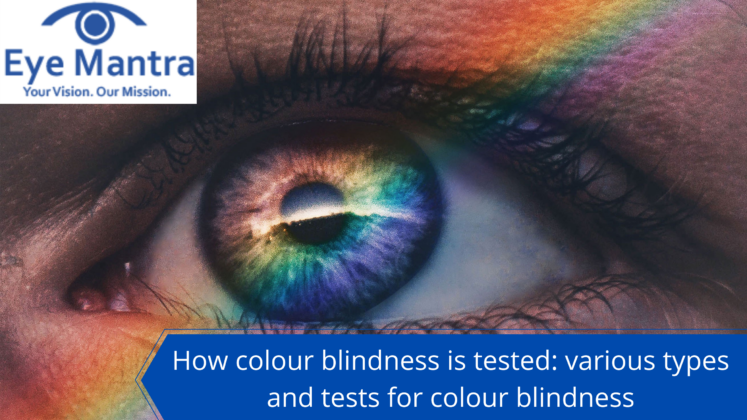
A Colour blindness test is performed for those who are unable to see the different colours. It involves performing a simple procedure where a person can use a set of images called Ishihara. It is one of the most common and widely used ways of testing colour blindness. Before knowing the types and procedure of the colour blindness test, one should know all about the condition of colour blindness.
Contents
Colour vision deficiency (CVD) or colour blindness is a medical condition that involves the inability to see colours traditionally. This usually happens due to the absence of certain cells called photoreceptors, also known as cones in your eyes. These cones are responsible for enabling you to see all the colours in the rainbow. During colour blindness, a person cannot see each of these colours. We all see colours differently due to the functioning of our photoreceptors functions. These cells respond to specific wavelengths of light. Your way of seeing colour may also change with growing age, in case you are exposed to certain age-related eye conditions including Cataract.
The major cause of colour blindness is the change or mutation in our genes. In several cases, people experience colour blindness since birth due to the absence of functioning cones in their eyes that helps in providing full-colour vision.
Several people might have different signs and symptoms depending upon the type of colour blindness they have. In case of hereditary colour blindness (a condition that passes on to you from your ancestors), you will experience it right from birth and might not notice any signs because you have always seen the colours the same way. However, if you have developed colour blindness due to any injury or illness then you might notice a sudden shift or signs of colour blindness where you are enabled to recognize colours. In some cases, symptoms may occur too slowly.
Several people confuse colour blindness with blindness. Blindness is a condition where a person completely loses the ability to see the world. Colour blindness is a type of blindness, where the person is enabled to see different colours. Other than the colours, the person can see the people, objects and perform his daily life routine without any difficulty.
There are mainly two kinds of colour blindness, which include:
There are various tests for colour blindness that may or may not require a doctor visit, these include:
Ishihara colour test: This method is used for testing red-green colour blindness. It involves looking at a series of circles or plates having different coloured and sized dots. Several dots form shapes and one or two-digit numbers. If you face difficulty in seeing red and green dots or face an inability to see them at all, then you might be having red-green colour blindness.
Anomaloscope: This method involves looking through an eyepiece and a circle. The circle contains yellow light at the upper half and red-green light at the bottom half. Here, you need to turn the knobs until both halves are of the same brightness and colour. This method for the colour blindness test is used to check for trouble seeing red and green colours.
Cambridge colour test: It is somewhat like the Ishihara test, where you need to look at a computer screen. During the test, a C shape will randomly pop up on the screen which will be completely different from the colour of the background. The person with colour blindness symptoms will need to find the C shape on the screen. When found, he must press one of the four keys.
Farnsworth-Munsell 100 hue test: This method for colour blindness test involves using blocks or pegs of different shades and the same colour. You will need to line those blocks or pegs in a certain way to check if you can pick up slight colour changes. Several companies use this technique to make their workers see the colours correctly.
Farnsworth lantern test: This method for colour blindness test is used by the US military to check if recruits are having mild to severe form of colour blindness.
Pseudolsochromatic plate (pip) colour vision test: This type of colour blindness test involves using 9 coloured (PIP) plates, which consists of various dots arranged in a circle. These dots appear randomized in size and colour. The pattern of dots forms a number in it, which will be difficult to see for people with red-green colour blindness.
Lantern colour blindness test: This test for colour blindness involves screening the identifying signal lights at night. During this test, the pair of vertically oriented lights including red, green and yellow are shown.
Although, colour blindness does not affect your everyday activities such as driving, work, and more. However, being colour blind can make your life tricky when it comes to identifying colours. Various colour blindness tests can help you identify your symptoms and seek medical treatment from an Ophthalmologist.